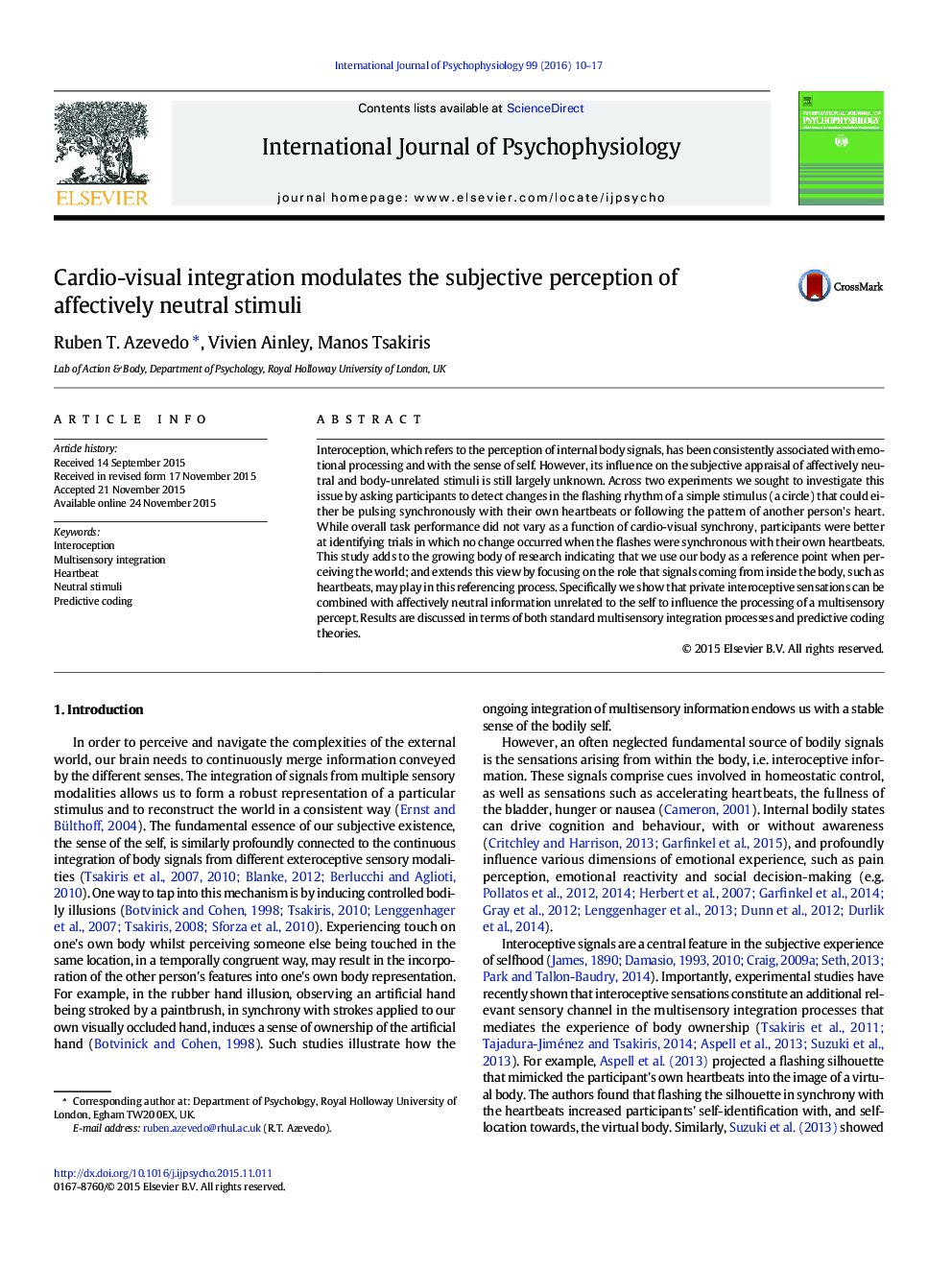| Article ID | Journal | Published Year | Pages | File Type |
|---|---|---|---|---|
| 930766 | International Journal of Psychophysiology | 2016 | 8 Pages |
•Participants were asked to detect changes in the rhythm of a flashing circle.•They were unaware that flashing was synchronous with their own or another's heartbeat.•Better identification of no-change when the flashing was synchronous with their heart.•Cardio-visual synchrony modulates the appraisal of affectively neutral stimulus.•This study shows an implicit integration of interoceptive and exteroceptive signals.
Interoception, which refers to the perception of internal body signals, has been consistently associated with emotional processing and with the sense of self. However, its influence on the subjective appraisal of affectively neutral and body-unrelated stimuli is still largely unknown. Across two experiments we sought to investigate this issue by asking participants to detect changes in the flashing rhythm of a simple stimulus (a circle) that could either be pulsing synchronously with their own heartbeats or following the pattern of another person's heart. While overall task performance did not vary as a function of cardio-visual synchrony, participants were better at identifying trials in which no change occurred when the flashes were synchronous with their own heartbeats. This study adds to the growing body of research indicating that we use our body as a reference point when perceiving the world; and extends this view by focusing on the role that signals coming from inside the body, such as heartbeats, may play in this referencing process. Specifically we show that private interoceptive sensations can be combined with affectively neutral information unrelated to the self to influence the processing of a multisensory percept. Results are discussed in terms of both standard multisensory integration processes and predictive coding theories.
